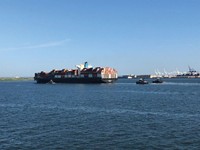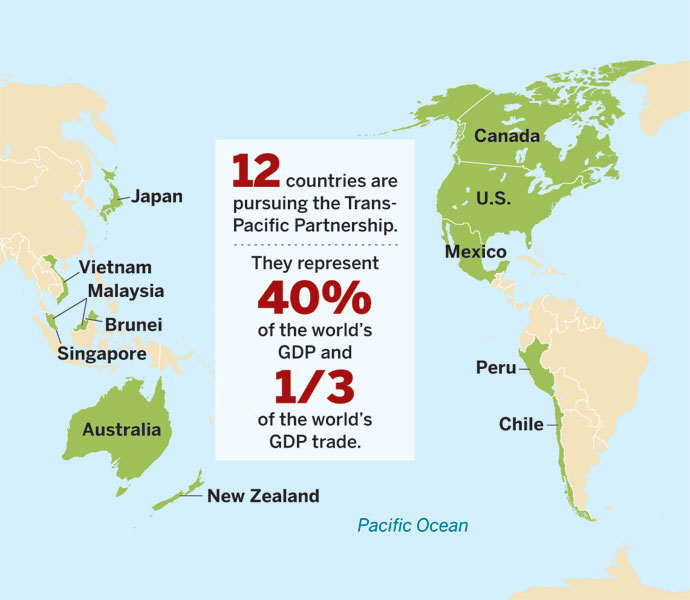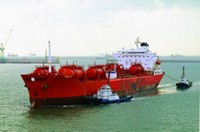Advertisement
Grab your lab coat. Let's get started
Welcome!
Welcome!
Create an account below to get 6 C&EN articles per month, receive newsletters and more - all free.
It seems this is your first time logging in online. Please enter the following information to continue.
As an ACS member you automatically get access to this site. All we need is few more details to create your reading experience.
Not you? Sign in with a different account.
Not you? Sign in with a different account.
ERROR 1
ERROR 1
ERROR 2
ERROR 2
ERROR 2
ERROR 2
ERROR 2
Password and Confirm password must match.
If you have an ACS member number, please enter it here so we can link this account to your membership. (optional)
ERROR 2
ACS values your privacy. By submitting your information, you are gaining access to C&EN and subscribing to our weekly newsletter. We use the information you provide to make your reading experience better, and we will never sell your data to third party members.
Policy
Exports Gain Traction
Chemical industry urges White House to pursue a more aggressive trade policy
by Glenn Hess
February 4, 2013
| A version of this story appeared in
Volume 91, Issue 5

President Barack Obama’s credentials as a free-trade advocate are suspect among Republicans and many in the business community. But after four tumultuous years with domestic policy at the center of his agenda, chemical industry leaders are hopeful that the President will move aggressively in his second term to open new markets for their products, particularly in Europe and Asia.
“Now that the elections are behind us, we think there is a renewed opportunity to focus on trade,” says Calvin M. Dooley, chief executive officer of the American Chemistry Council (ACC), a trade association that represents more than 140 chemical manufacturers.
The White House is working to conclude negotiations on an agreement that would create a giant free-trade zone in Asia-Pacific—a region that represents more than 40% of global trade. Chemical manufacturers also want the Administration to launch negotiations for a comprehensive trade deal between the U.S. and the European Union.
The idea of a pact between the trans-Atlantic trading partners has been kicked around since the 1990s, but never formally pursued. But with each side desperate to spur job creation, U.S. and EU trade officials are widely expected to give the go-ahead to start talks, perhaps as soon as this spring.
The chemical industry, Dooley notes, accounts for almost 12% of total U.S. exports, making it one of the nation’s leading export sectors. Overall, U.S. chemical exports were up a modest 0.9% to $189 billion in 2012 as the health of the world economy remained fragile.
U.S. petrochemical manufacturers in particular are benefiting from access to vast new supplies of natural gas from previously untapped shale deposits. Ethane, a natural gas liquid derived from shale gas, is used as a feedstock by U.S. chemical companies, giving them an advantage over foreign competitors that rely on a more expensive oil-based feedstock. As a result, the industry expects to see faster export growth as the U.S. emerges as a global low-cost supplier of many petrochemical and plastic products.
Some chemical makers are worried though that proposals to increase exports of liquefied natural gas would increase their energy and feedstock costs, diminishing their current competitive advantage (C&EN, Jan. 28, page 6).
Nevertheless, ACC forecasts that chemical exports will increase 4.7% and reach $200 billion this year and that they will continue to grow at a rate of 6.2% to $209 billion in 2014 as shale gas production increases.
“Boosting exports continues to be one of the most promising ways to strengthen U.S. competitiveness, grow the economy, and drive further expansion of the U.S. chemical industry,” says Dooley, a former seven-term Democratic congressman from California.
Expanding international trade has been a key agenda item of both Republican and Democratic presidents going back to World War II. But Obama’s record on trade was frequently a target of Republican challenger Mitt Romney throughout the presidential election campaign last year.
Romney noted that since taking office in 2009, Obama has not initiated any free- trade agreements of his own. “The President has not signed one new free-trade agreement in the past four years,” Romney said in an October 2012 speech at Virginia Military Institute in Lexington, Va.
In October 2011, Congress passed and Obama signed into law bilateral trade pacts with South Korea, Colombia, and Panama. But those agreements were largely negotiated by the Administration of former president George W. Bush.
After taking office, Obama delayed action on the Bush-era trade pacts for more than a year. Intent on boosting U.S. exports, he then renegotiated some aspects of those agreements to make them more acceptable to labor unions—whose members were worried about jobs being sent overseas—and congressional Democrats before sending them to Capitol Hill for ratification.
Obama has also continued the Bush Administration’s effort to form a Trans-Pacific Partnership, a free-trade zone in the Asia-Pacific region. Negotiators from Australia, Brunei, Canada, Chile, Malaysia, Mexico, New Zealand, Peru, Singapore, the U.S., and Vietnam are scheduled to meet in Singapore in early March for the 16th round of talks aimed at bringing down tariffs, strengthening protection of intellectual property, and promoting regulatory and legal coordination.
“We think there are more opportunities we can take advantage of if we can see progress on the Trans-Pacific Partnership,” Dooley says.
After some hesitation, the Obama Administration has fully embraced the Trans-Pacific Partnership as its top trade priority, says William E. Allmond IV, vice president of government relations at the Society of Chemical Manufacturers & Affiliates, a trade group for mostly small to midsize specialty chemical companies.
“The White House is much more engaged on trade,” Allmond remarks. Negotiations on the Pacific Rim-based trade pact began under Bush, but “the Obama Administration is taking it on as their own now.”
The main outstanding issue is whether Japan—the world’s third-largest economy—and South Korea will join the talks. The U.S. hopes to wrap up negotiations by October of this year and have the pact take effect by 2015.
According to projections by the nonpartisan research institution Peter G. Peterson Institute for International Economics, an Asia-Pacific free-trade region that includes Japan and South Korea could produce annual income gains of $295 billion globally and $78 billion for the U.S.
“Our calculation is that the pact could generate upward of $300 million in additional exports for the chemical industry alone,” Dooley notes.

Trans-Atlantic relationships are also getting new attention. Industry officials say they will push for a comprehensive free-trade agreement between the U.S. and the EU. A high-level working group composed of U.S. and EU officials is expected to issue a report early this year recommending that formal negotiations begin on a trans-Atlantic pact that increases trade, investment, and regulatory cooperation.
“This would be huge for the chemical manufacturing industry,” Allmond says. “Data show that of all the U.S. manufacturing sectors that export to Europe, chemical manufacturing will be the largest benefactor of a free-trade agreement—above agricultural, above heavy machinery.” More than $1 billion in tariffs was assessed on U.S. chemical exports to Europe in 2011, he notes.
With Europe facing a devastating debt crisis and the U.S. economy still struggling to recover from the Great Recession, the appeal of a deal that dismantles trade barriers is obvious for both sides. The U.S. and the 27-nation EU already are each other’s most important trade and investment partner, as well as close political and military allies. U.S. trade with the EU totaled $594 billion in the first 11 months of 2012.
The benefits that might flow from a U.S.-EU free-trade agreement were examined in a February 2012 study by the German Marshall Fund of the U.S., a nonpartisan public policy institution in Washington, D.C.
Abolishing tariffs altogether could produce gains of up to $86 billion for Europe and $82 billion for the U.S., according to the report. It also says that a 50% reduction in nontariff barriers such as unnecessary or duplicative standards could boost gross domestic product by roughly $160 billion in Europe and $53 billion in the U.S.
TOP TEN
Basic chemicals ranked fourth among exporting industries in 2012.
1. Petroleum & Coal Products
2. Aerospace Products & Parts
3. Motor Vehicles
4. Basic Chemicals
5. Motor Vehicle Parts
6. Pharmaceuticals & Medicines
7. Agriculture & Construction Machinery
8. Nonferrous Metals (Except Aluminum) & Processing
9. Oilseeds & Grains
10. Navigational, Measuring & Control Instruments
NOTE: Industries are ranked by dollar value of domestic exports for January to November 2012.
SOURCE: U.S. International Trade Commission
Discarding tariffs would mean considerable savings for the chemical industry. The import duties that the U.S. and EU impose on each other’s chemicals and other industrial goods are already relatively low, less than 3% on average.
But eliminating those tariffs would result in annual savings of about $600 million on intracompany trade alone, Dooley notes. “This is basically a tax on a company that is really not contributing anything to end-use consumers,” he remarks.
It’s estimated that more than one-third of all trade between the U.S. and Europe consists of internal transfers by companies that have operations on both sides of the Atlantic. General Electric, for example, has more than 90,000 employees working in Europe, while German chemical giant BASF has more than 15,000 employees in the U.S.
Outgoing Secretary of State Hillary Rodham Clinton signaled the Obama Administration’s interest in a U.S.-EU trade pact in a speech on Nov. 29, 2012, at the Brookings Institution in Washington, D.C. “We are discussing possible negotiations with the European Union for a comprehensive agreement that would increase trade and spur growth on both sides of the Atlantic,” Clinton said.
“If we work at it and if we get this right,” she continued, “an agreement that opens markets and liberalizes trade would shore up our global competitiveness for the next century, creating jobs and generating hundreds of billions of dollars for our economies.”
European officials, including British Prime Minister David Cameron, German Chancellor Angela Merkel, and EU Commissioner for Trade Karel De Gucht, have also expressed enthusiasm for such a deal.
“Europe and the U.S. have many things in common, but the most important of these right now is the need for growth,” De Gucht says. “So we need to make sure that we are using every option on the table to boost growth, and a trans-Atlantic free-trade agreement would be one of the best options available.” He thinks an agreement could be concluded by mid-2014.
Importantly, organized labor has indicated that it will not stand in the way of negotiations. The AFL-CIO, the giant U.S. labor federation, asserts that European social welfare and environmental standards exceed those in the U.S.
“The AFL-CIO believes that increasing trade ties with the EU could be beneficial for both American and European workers,” the union says about a potential deal.
Beyond the potential removal of tariffs, “there could also be some harmonization of regulations that could contribute to greater efficiency and savings,” Dooley adds.
But significant differences in regulatory systems could be difficult to resolve. For example, the two sides are currently at loggerheads over the EU’s carbon trading scheme and have substantial disagreements over intellectual property enforcement and food safety standards.
Chemical management regulatory systems in the U.S. and EU are also fundamentally different. Under the U.S. Toxic Substances Control Act of 1976, the Environmental Protection Agency must demonstrate that a chemical “presents or will present an unreasonable risk” to health or the environment before it can ban, restrict, or take other actions to manage that risk. Congress is currently looking at reforming this 37-year-old law.
Europe’s Registration, Evaluation, Authorisation & Restriction of Chemical substances (REACH) program, adopted in 2006, reversed the burden of proof so that the chemical industry must prove that the products they put on the market are safe.
“Our guess is that Europe will not want to modify their REACH program,” Allmond says. “But there are some other nuances and concerns, such as testing costs, which can probably be addressed without having to change REACH.
“Of course, the U.S. isn’t going to be interested in adopting a REACH-like program in turn,” he adds. “But I do think there is some harmonization of regulations that can be addressed through a free-trade agreement.”
Michael P. Walls, vice president of regulatory and technical affairs at ACC, agrees that there is “potential to enhance regulatory cooperation across the Atlantic.” A key goal in the chemical sector, he says, should be to avoid unnecessary duplication of efforts in chemical testing, assessment, and evaluation by both governments and industry.
“We know that regulatory agencies in both the U.S. and Europe are interested in generally the same sort of priority chemicals” for review and evaluation, he points out. “So we think there are opportunities to start sharing the burden of work and for greater consultations between the governments on essential scientific issues, such as those surrounding endocrine disruption, for example.”
Increased sharing of information on chemicals in commerce between regulatory bodies would help reduce the costs and the burdens of the process on both government and industry in a way that promotes and enhances the protection of health and the environment, Walls says.





Join the conversation
Contact the reporter
Submit a Letter to the Editor for publication
Engage with us on Twitter